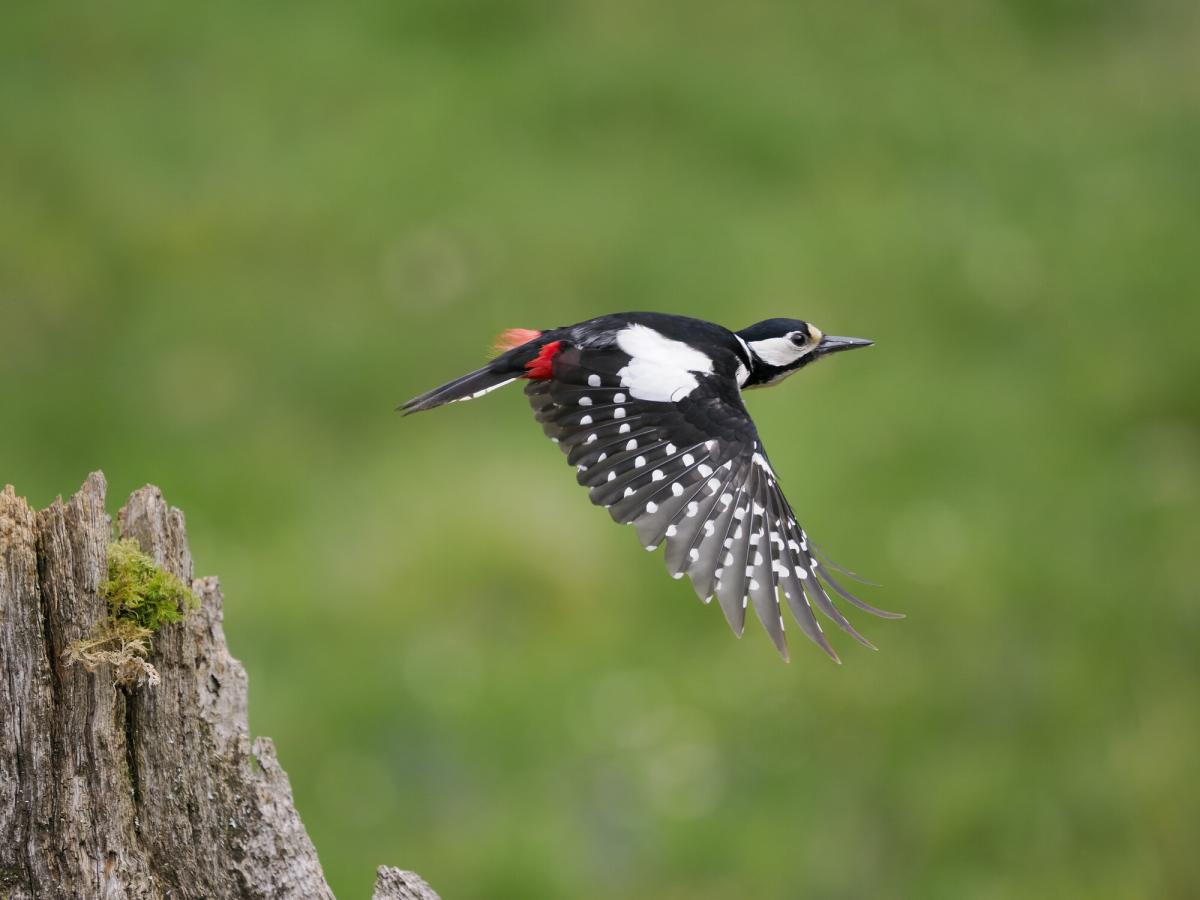
World Wildlife Day: The importance of deadwood for creatures of the Forest
Connecting People and Planet is the theme for World Wildlife Day (3rd March) this year. At the Heart of England Forest, we are creating and conserving an array of habitats including mature and ancient woodland, grassland, wetlands, and woodland rides to benefit wildlife, people, and the environment, that can be visited all year round.
This World Wildlife Day we shine a spotlight on a particular niche microhabitat that provides homes, feeding spots, and much more for wildlife – deadwood. Deadwood habitats are crucial for wildlife in the Forest and are easily created at home to help you connect with some more unusual wildlife in your outdoor spaces this World Wildlife Day.
Why are microhabitats important?
Without a mixture of microhabitats, biodiversity is lowered as many species are unable to thrive. Thousands of invertebrates rely on deadwood, which in turn provide food for a whole host of other animals. There are many types of deadwood habitats within the Forest, providing homes for a wide array of wildlife.
Dead hedgerows
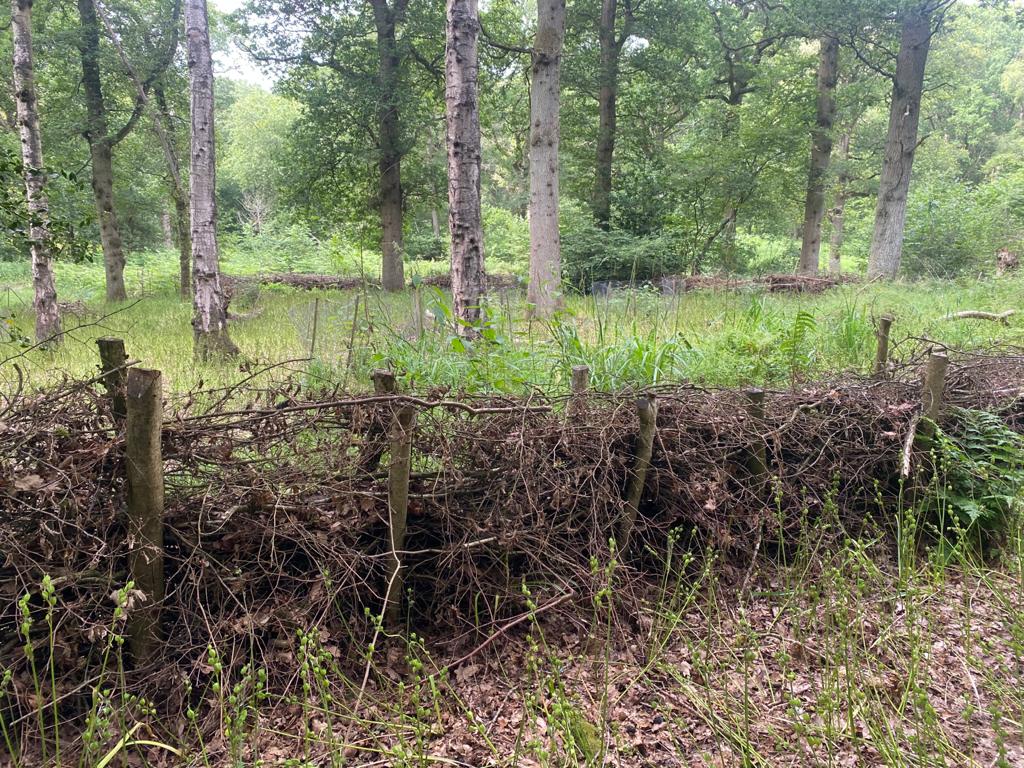
Dead hedgerows are created using piles of branches and twigs. They can be piled roughly between, or woven in and out of, vertical branches used as posts. Dead hedges, as the name suggests, are arranged to form a hedgerow shape. These not only provide a niche habitat but can also be used as a natural barrier.
They provide excellent shelter for many species of bird and small mammal. Over time the dead hedge will slowly and naturally rot away providing habitat for specialist invertebrates and fungi.
Stacks/piles
Are as simple as they sound! Stacks or piles are formed by laying branches and logs on top of one another. When trees need to be felled or fall in a dangerous way, they can be cut into sections and then piled together. Alternatively, trees which have come down, possibly due to the wind, can be left in-situ.
As mature and veteran trees age, retrenchment occurs starting with the upper parts of the tree dying back at the ends of the branches. This is a natural process which can lead to natural deadwood falling to the forest floor from the upper canopy.
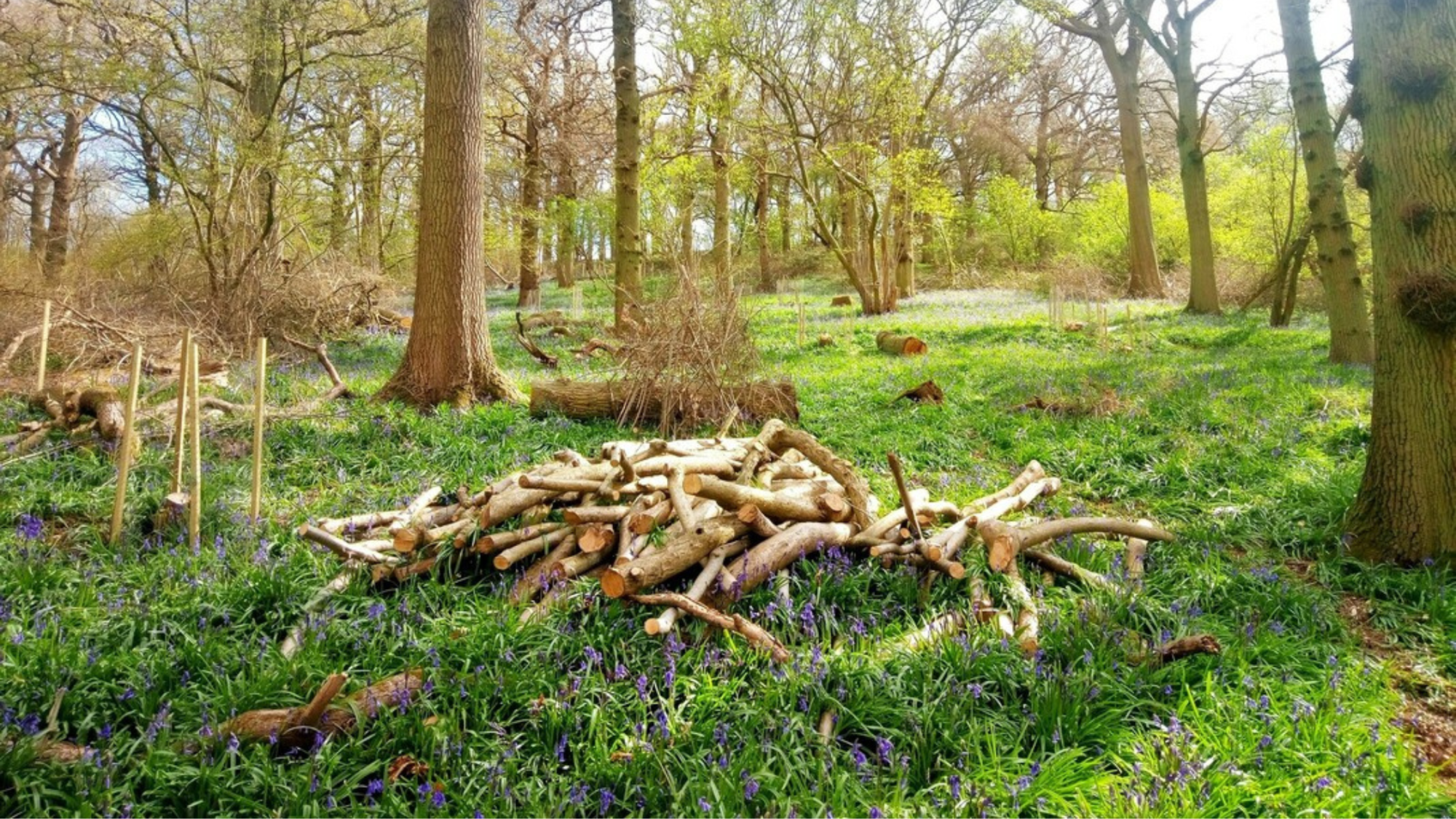
Standing deadwood
Standing deadwood can be seen throughout the Forest in the form of veteran trees, stumps, and standing dead trees (commonly known as a snag).
All forms of standing deadwood create invaluable habitat. Veteran trees provide a large variety of standing deadwood habitats. These include flaking bark and crevices used by bats, decaying heartwood/hollowing used by many species of invertebrate and holes made by birds exploited by other birds and small mammals.
Various types of fungi, lichens, and moss can often be seen growing off both stumps and snags within the Forest. When you next come across deadwood why not take a closer look and let us know what you find?
Wildlife that benefits from deadwood
Here are our top three animals that benefit from deadwood in the Forest:
These beetles rely on deadwood! This is usually whole timber, with contact to the soil or partially buried underground. The females lay their eggs in the soil, close to the wood, the larvae then feed upon the decaying wood.
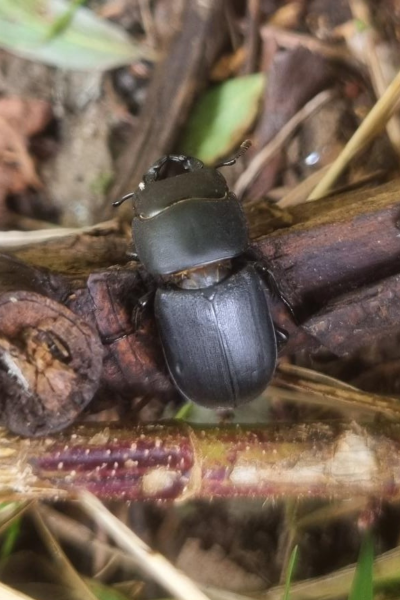
The great spotted woodpeckers rely on standing deadwood to hunt for food e.g. beetle larvae

Many reptiles may use deadwood to bask in the sun. Decomposing piles of wood and other Forest vegetation provide heat required by basking reptiles. Deadwood piles close to pond habitats also make ideal places for them to build nests/lay eggs.
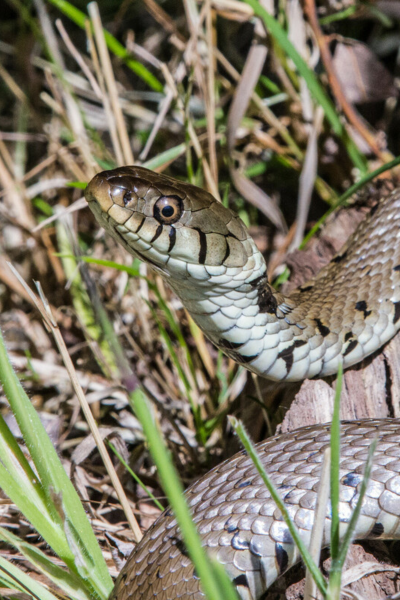
Its place within the Forest
Deadwood is a crucial component of forest ecosystems. Not only does it play an essential role in sustaining biodiversity, but it also delivers important ecosystem services. Deadwood plays a key role in processes such as soil formation and nutrient cycling. As wood decomposes it returns important nutrients to the soil, supporting new growth. It also supports up to a fifth of woodland species who are dependent on dead or dying wood to complete their life cycles.
Deadwood of all varieties supports a large and complex food chain which is driven by fungi. Did you know that around 2,000 of the UK’s invertebrates are saproxylic? This means that they are reliant on dead or decaying wood! But it is not just the mini-beasts that rely on deadwood. For example, hollow trees provide homes for birds and mammals, with many species of bat to be found roosting inside.

Create your own at deadwood habitat at home
If you are interested in creating a deadwood habitat at home to celebrate World Wildlife Day, then give these simple ideas a try:
- When pruning, pile up the removed vegetation along with some sticks and leaf litter
- Remove a ring of bark around a limb of a tree or shrub, creating standing deadwood
- Leave old tree/ shrub stumps in place
- Create a log pile by stacking branches and logs in a semi-shaded corner of your garden. You could also drill holes into the log ends to create habitats for solitary bees.
Creating deadwood in your garden will help bring you closer to the natural environment. You will encourage all sorts of wildlife! Alongside all the amazing invertebrates, you may be lucky to see hedgehogs, birds, frogs, toads, and even newts using your newly created microhabitat!
Tag us in your deadwood habitat creations this World Wildlife Day on Facebook, Instagram and Twitter. We’d love to see!




